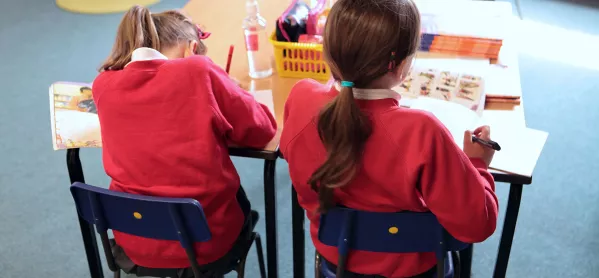- Home
- Sats data 2019: all you need to know
Sats data 2019: all you need to know

How data from Sats is calculated and used
During Sats season, key stages 1 and 2 students up and down the country complete a number of tests, answering hundreds of questions, and generating heaps of data.
But what happens to it? And how can schools make sure they’re making the most of it?
How schools interpret the scores
At KS2, schools look at how a student has progressed from KS1. From this, the Department for Education (DfE) generates performance tables.
The data is used to calculate the average progress of students in the school, and is broken down to look at the progress made on each paper.
There is a “floor standard” that is calculated from the data and in 2018 this was 65 per cent of students meeting the expected standard, or reaching the minimum progress score in maths and English reading and writing.
This data is also used to determine if the school is “coasting”. To do this, there must be three years of data.
In 2018, a school was defined as coasting if, for the past three years, fewer than 85 per cent of pupils achieved the expected standard and also failed to meet minimum average progress levels.
Individual pupil progress scores are calculated using KS1 and KS2 data, and national data. A school’s progress score is generated from this, with results for each subject taken from a mean average of its pupil progress scores.
Where the data goes
Every school must keep educational records for each student and Sats results form part of the curricular record (a subset of the educational record).
The results from the Sats tests are passed on to the relevant secondary school as part of their common transfer file.
Find more information about the storing and sharing of student data.
What happens to students who don’t meet the expected standard?
For students who do not meet the expected standard in Year 6, there is a literacy and numeracy catch-up premium given to state-funded schools (including special schools and alternative provision settings) to provide additional support.
If the school is part of a local authority (LA), funding is given to the LA and passed on to the school. If the school is an academy or free school, funding comes directly.
Schools are able to identify which students need the extra support and the best way to use the funding. Schools can use the question-level analysis function to analyse the KS2 data in order to ascertain which specific areas to focus on with the students.
Find more information on question level analysis.
Some schools use the funding to pay for individual tuition, small group tuition and summer schools.
For more information on effective approaches, the DfE has provided a summary of research.
If a school uses the Year 7 catch-up premium funding, it must be published on the school’s website. The way this funding is spent will be considered if a school is then inspected by Ofsted.
How secondary schools use the data
In order to calculate Progress 8, schools must use the KS2 data given to them by primary schools. Progress 8 was introduced to capture the progress that students make between the end of primary school and the end of KS4.
Progress 8 measures the value added by the school by comparing the progress of students in one school to the progress of other students who have similar prior attainment. This information is then used to create performance tables.
Progress 8 is calculated by comparing each pupil’s Attainment 8 score with the average Attainment 8 score of all other students who had a similar starting point at KS2.
The higher the score, the greater the value added by that school when compared to other schools nationally.
Then the school’s Progress 8 score is calculated by working out the average of all of its pupils’ Progress 8 scores. This gives an indication if pupils in the school have made above or below average progress when compared to similar pupils in other schools.
Find more information on Progress 8 and how it is calculated.
How local authorities use the data
KS2 data is reported to the LA, which uses the national data and data from similar LAs to put the attainment of the schools into context. Schools are also held to account by the regional schools commissioners.
The LA will moderate a sample of assessments from the school to ensure that there is consistency in the marking at both KS1 and KS2.
How Ofsted uses the data
Ofsted has dismissed idea that teachers should predict Sat results for their students and the suggestion that past pupils’ attainment could determine inspection outcomes is also ruled out. A guide to inspection myths states:
Ofsted does not require schools to predict their attainment and progress scores. It is impossible to predict attainment and progress as examination and test results for each cohort are compared nationally and this cannot be done until after the examinations or tests.
Attainment of past pupils does not determine inspection outcomes. Published attainment data can inform inspectors’ key lines of enquiry, and inspectors take published data into account in evaluating outcomes. However, in reaching a judgement about outcomes, inspectors will give most weight to progress, particularly the progress of pupils currently in the school.
If KS2 results dip for one year, this doesn’t trigger an inspection. However, if there was a pattern of falling results, then this could cause Ofsted to inspect the school.
Keep reading for just £1 per month
You've reached your limit of free articles this month. Subscribe for £1 per month for three months and get:
- Unlimited access to all Tes magazine content
- Exclusive subscriber-only stories
- Award-winning email newsletters



